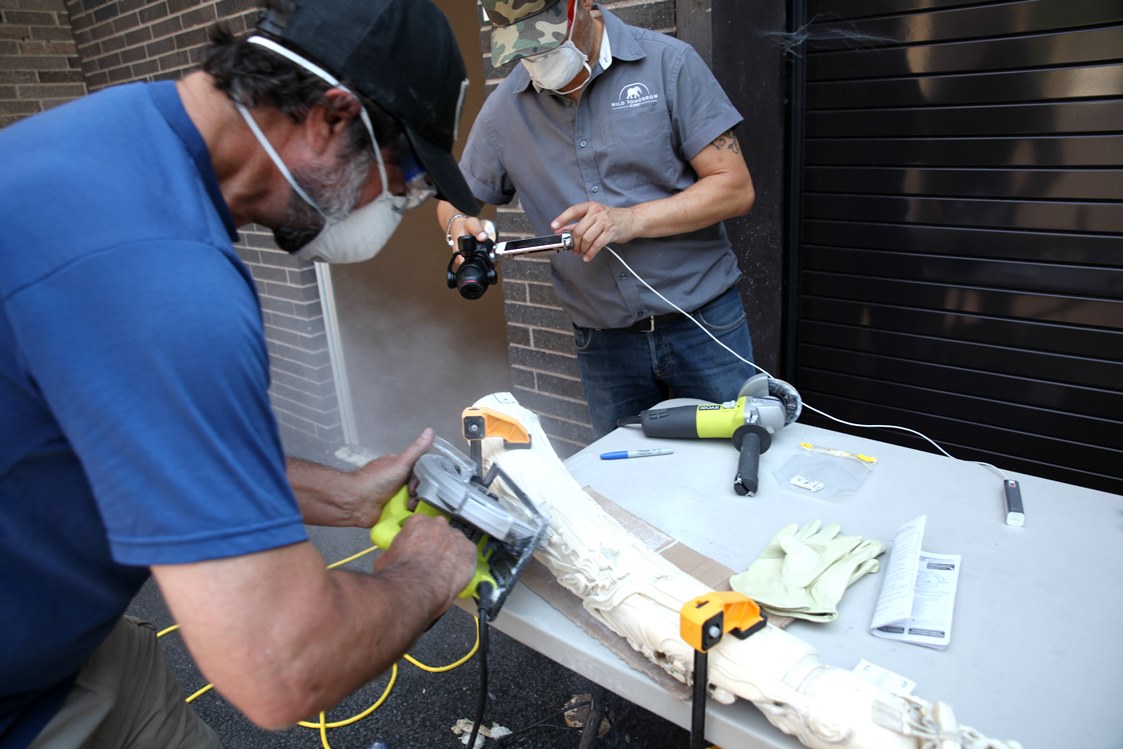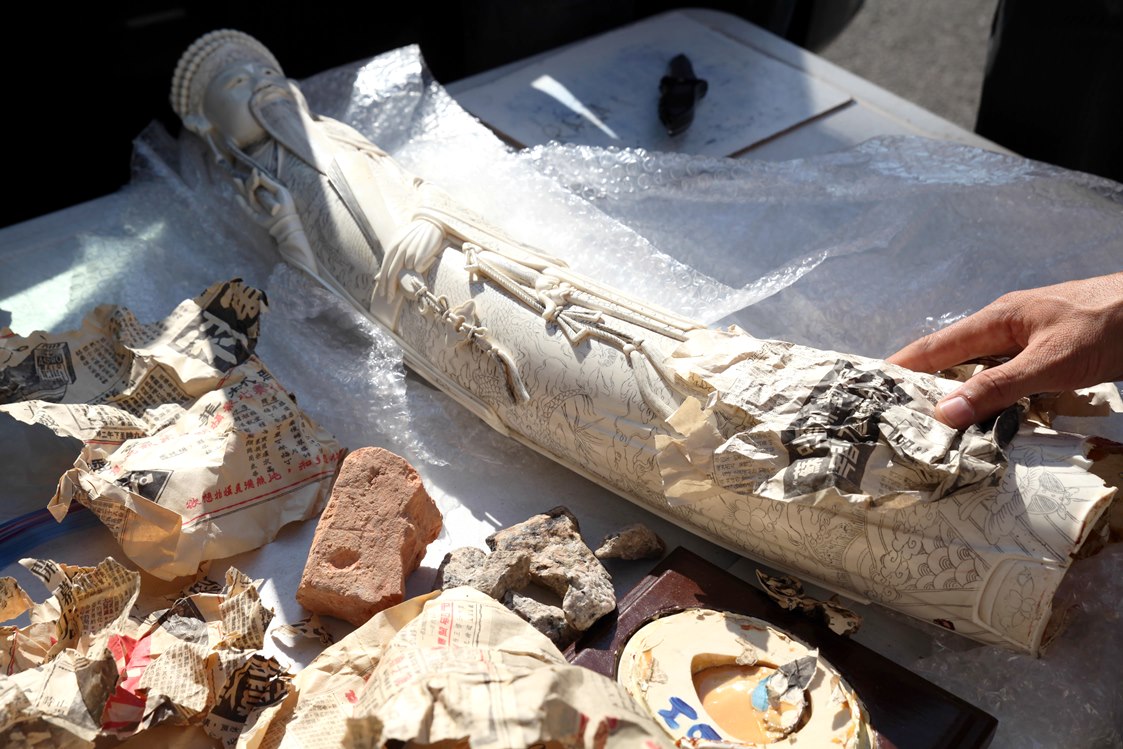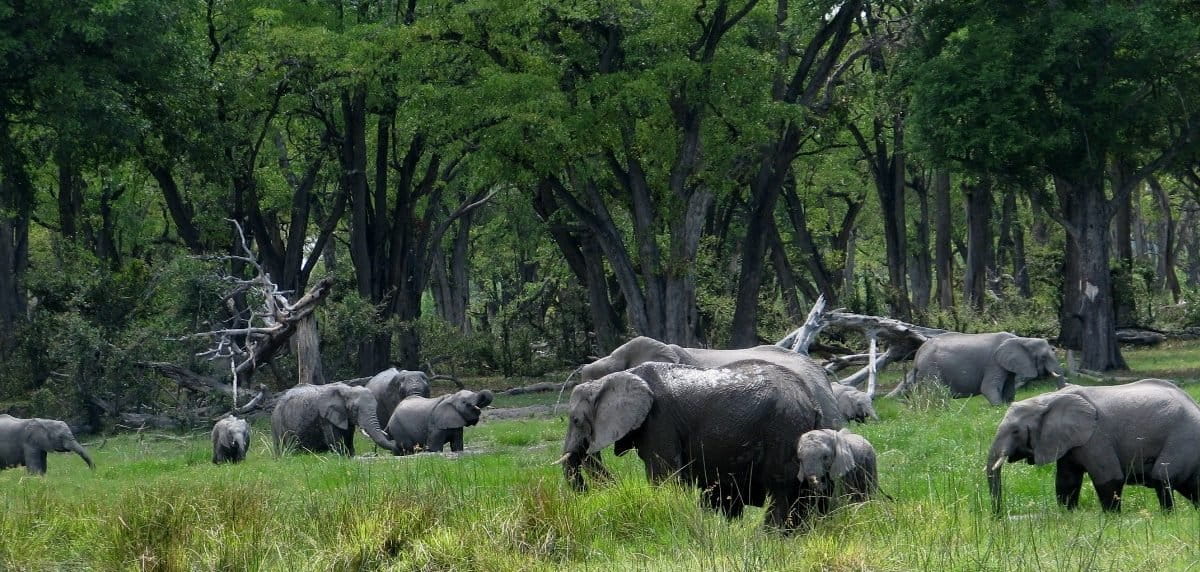- Scientists are analyzing ivory samples confiscated from the U.S. retail market to help reduce elephant poaching.
- Two teams of scientists will use radiocarbon dating to determine when each elephant was killed and DNA analyses to locate where it came from in Africa.
- Determining the location and year an elephant that produced a tusk was killed establishes if the ivory being sold is legal, helps assess the current extent of poaching, and assists law enforcement in targeting the poachers responsible.
The United States, a major ivory market
The sale of ivory across international boundaries has been banned since 1990, when the African elephant was listed among species prohibited for commercial trade, but the precious commodity still manages to find its way to buyers in Asia, Europe, and North America.
The United States buys more retail ivory than any country except China. Until 2016, it allowed the import and domestic trade of antiques and ivory from elephants killed before the listing. The 2016 near-total ban on commercial trade in African elephant ivory sharply restricted its legal sale, but illegal ivory sales continue, especially over the internet.

Sifting the legal from the illegal has proved difficult. One study found that most items sold were antiques and that a high proportion of seizures in the U.S. between 1990 and 2005 were small and comprised primarily jewelry and other personal possessions.
Nevertheless, smugglers have continued to import recently carved items from China and Hong Kong into markets in several major U.S. cities, including New York, Honolulu, Los Angeles, and San Francisco, and, more recently, Washington, D.C.
Determining the year an elephant that produced a tusk was killed not only establishes if the ivory being sold is legal; it also helps assess the current extent of poaching. If much of the ivory being traded is old, it would indicate poaching might be less rampant in recent years and U.S. consumer demand might not be impacting elephant populations. However, if the ivory being traded is from recently killed elephants, then poaching is, in fact, continuing to diminish elephant populations and disrupt their social structure.

Researchers tackling this problem have turned to a technology developed in the 1950s: radiocarbon dating. By analyzing the radioactive carbon remaining in seized ivory, scientists can work out how long ago the elephant from which it came was killed.
“If we do indeed find via radiocarbon dating that some of the pieces of ivory are new, this will be very important information,” Wendy Hapgood, chief operating officer of the non-profit Wild Tomorrow Fund, told Mongabay in an email. “There have been no large-scale ivory seizures coming into the U.S. for many years. This would mean that newly poached ivory is entering the U.S. undetected.”
Determining the when and where of elephant poaching
Wild Tomorrow Fund initiated efforts to sample seized commercial ivory before its destruction, bringing two scientific teams together with New York State law enforcement and securing funding for the project.
The two teams are supporting anti-poaching efforts by applying large-scale databases and analysis techniques to determine the age and origin of processed ivory products in the U.S. Their previous work has helped focus anti-poaching efforts in Africa and prosecute ivory traffickers elsewhere.

Among them is geochemist Kevin Uno from Columbia University, who was part of a team, led by researchers at IsoForensics in Utah, that used radiocarbon dating to estimate the age of 231 ivory specimens. These were confiscated from 14 large ivory shipments seized between 2002 and 2014, as the tusks were being illegally shipped out of Africa.
In that 2016 study, the team analyzed the tissue where the tusk meets the animal’s head—the point where new ivory was forming when the elephant was killed. By isolating the collagen from a tusk sample, then freeze-drying it and running it through an accelerator mass spectrometer, Uno and his colleagues could measure the amount of radiocarbon in the tusk. This amount reflects the time that elapsed from when the animal died until the seizure date.
Exceptions to the 1990 international trade ban, allowing the sale of old ivory pieces and those traded prior to the ban in some countries, prompt traders to claim their products were older to avoid prosecution. However, all but four of the specimens in the 2016 study were found to have come from elephants killed within five years of the seizure.

Radiocarbon, the radioactive carbon-14 isotope, also known as 14C, occurs naturally in Earth’s atmosphere and is absorbed by plants through photosynthesis as carbon dioxide. Herbivores eat plants, so 14C exists in all living organisms.
Radiocarbon differs from the far more common nonradioactive carbon-12 isotope because it decays over time. Once an organism dies, its tissues contain the level of 14C in the atmosphere at that time. They stop absorbing new carbon, and their level of 14C decreases, or decays, at a known rate.
Above-ground nuclear testing by the United States and the Soviet Union in the early 1960s produced enough 14C to nearly double its concentration in the atmosphere. Scientists have measured atmospheric 14C since this so-called “bomb pulse” and charted the steady decline in this excess concentration of 14C.
Comparing 14C levels in a modern (post-1960) biological sample to the “bomb curve” of continuous measurements of atmospheric 14C enables scientists to estimate when the tissue was formed, plus or minus six months, rather than a range of years that is typical of natural decay of 14C.

Biologist Samuel Wasser at the University of Washington and colleagues had previously determined the geographic origin of the ivory specimens from the same large seizures by comparing their DNA to a mapped reference database of DNA extracted from elephant dung collected across Africa. Wasser’s team will apply a similar process to the U.S. retail ivory.
For this latest analysis, Wasser said in an email, “We are now adding genetic tools aimed at connecting individual cartels to multiple shipments.” They found that the two tusks from the same elephant often get separated en route from the poaching location to where they are exported out of Africa in large shipments.
“By genotyping many tusks in large numbers of recent large ivory seizures (as part of our ivory tracking work), we obtain enough genotypes to find these genetically matched tusks in separate shipments,” Wasser said. “We then compare other features common to the two matched shipments (port of export, time of export, overlap in the distributions of tusks in the matched shipments), which collectively demonstrate that the same exporter packed both shipments.”

Making analysis work for conservation
This is the first time that the scientists have been permitted to test illegally trafficked ivory seized from vendors in the U.S. In fact, said Hapgood, “This is the first time that a retail ivory seizure has been sampled.”
“There was some hype” over this new endeavor, Uno said in an email, “but it was not due to technological development, rather to turning towards retail sources of ivory. Work previous to this has focused on seized ivory transiting out of Africa.”
Hapgood, Wasser, and Uno sampled two “chips” of ivory from each product to be analyzed for DNA in Wasser’s lab and for 14C through Uno’s lab. Wasser’s lab has already begun analyzing the DNA in the ivory samples, and Uno’s team is currently preparing samples for radiocarbon dating, which is done by a specialized lab at IsoForensics.

Although genetic analysis has become available to an increasingly broad number of authorities, researchers, and other conservation practitioners, access to the specialized equipment used for radiocarbon dating is still limited. The radiocarbon dating that Uno carries out relies on equipment called accelerator mass spectrometers, which are operated by “about two dozen or so labs” worldwide, he said.
“For example, I only know of one in the southern hemisphere at Waikato, New Zealand. But more are coming online year by year. There are none in Africa but some in Asia (China & Hong Kong),” Uno said.
By combining these analyses, the collaborators aim to help law enforcement and policymakers shut down the ivory market and raise public awareness of the plight of elephants.
Hapgood said they plan to announce the results of the testing at an event timed for World Elephant Day on Aug. 12. Analyzing ivory from the U.S. may help connect Americans more personally to the devastation caused by elephant poaching.
“The information that we will learn from the scientific testing will enable us to individualize 20 of the individual elephants who died to end up on the streets of New York City,” Hapgood said. “These elephants had families, lived in the wild (we will find out where) and led emotional lives. This testing will enable us to connect ‘who’ the elephants were, when they died, where they came from, and to tell their personal story.”

Banner image is of elephants feeding and drinking at a water hole in Botswana’s Okavango Delta. Photo credit: Sue Palminteri
FEEDBACK: Use this form to send a message to the editor of this post. If you want to post a public comment, you can do that at the bottom of the page.
